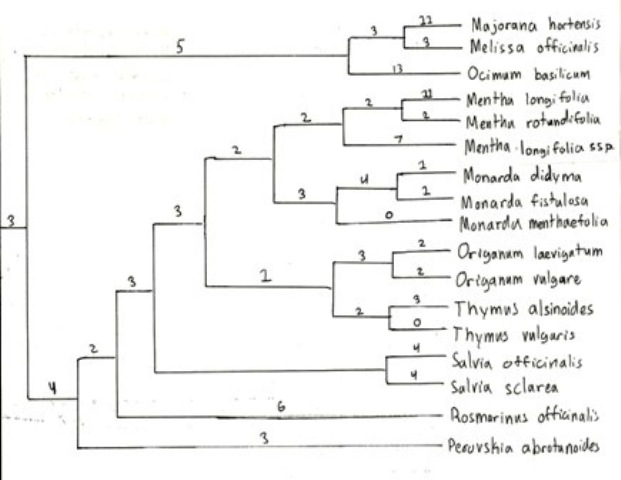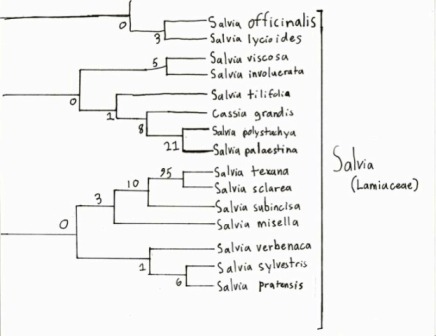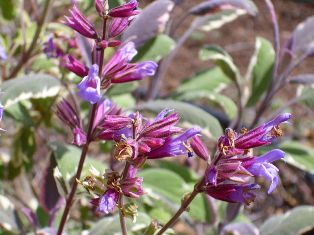
Classification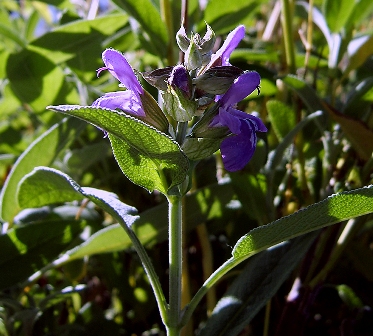
Domain: Eukarya
Kingdom: Plantae
Phylum: Magnoliophyta
Class: Magnoliopsida (Dicotyledons)
Order: Lamiales
Family: Lamiaceae
Genus: Salvia
Species: Salvia officinalis
Eukarya: Sage is a eukaryote because its cells h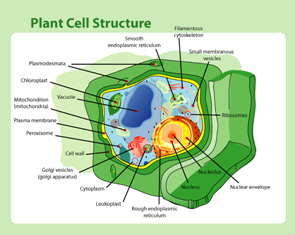 ave
a true nucleus and membrane bound organelles. To see another cool
organism from the eukaryotes take a look at the
Caterpillar Fungus!
ave
a true nucleus and membrane bound organelles. To see another cool
organism from the eukaryotes take a look at the
Caterpillar Fungus!
Plantae: Sage is part of the kingdom plantae because is can photosynthesize and has cellulose cell walls. This kingdom also includes just about every land plant. To see another interesting representative from this kingdom check out the Castor Bean!
Magnoliophyta: Sage belongs to the phylum magnoliophyta because it is a flowering plant that produce true fruits that enclose the seeds. To see another member of the magnoliophyta, check out Opium poppy.
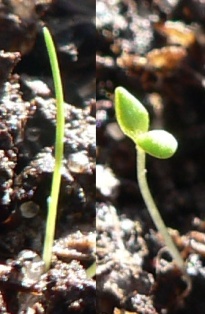
Magnoliopsida: Sage belongs to the class magnoliopsida, which is also known as the dicotyledons. Members of this class are characterized by two sprouting leaves called cotyledons and net like leaf veination (as seen in picture on the right). Another cool representative is St. Johns Wort!
Lamiales: This order is a group of plants that are characterized by bilateral symmetry and four or less fertile stamens.
Lamiaceae: This group of plants is also known as the mints. Most plants in this family aromatic herbs and are used for cooking. As seen below is the phylogeny for only a few members of the lamiaceae family based on the RBCL gene. This RBCL gene is part of the chloroplast genome and is used to determine evolutionary relationships throughout various phyla of plants. Based on this tree, Salvia officinalis more closely related to the thyme (Thymus), oregano (Origanum), Monarda and Mentha groups than it is to the other groups. This phylogenetic tree was re-drawn from Kaufmann et al., 1994.
Salvia: This group of flowering plants produces fruits that are oblong, called nutlets. Many species of salvia also have hair on the surface of their leaves. This adaptation reduces water loss and in some plants like sage, the hairs secrete volatile oils which give them distinct smells.
This is a phylogenetic tree of the salvia genus based on RBCL gene sequencing. In this tree Salvia officinalis shares a close relationship with Salvia lycioides based on this gene and is more distantly related to the rest of the species in the tree. This phylogenetic tree was re-drawn from Reddy, 2009.
Salvia officinalis (Sage): This species of Salvia is characterized by woody stems and blue and purple flowers. This flower has many uses in traditional medicine and cooking. The Scientific name describes this plants medicinal properties. Salvia stems form the Latin word Salvere, which means to save or to cure and officinalis means to be used in medicine. This species has been given the common name Kitchen Sage because of its extensive cooking use.
To see the classification of another species, check out Ginseng.
To see what kind of habitat sage lives in, proceed to Habitat.
To see other awesome organisms, check out the Multiple Organisms web page.
